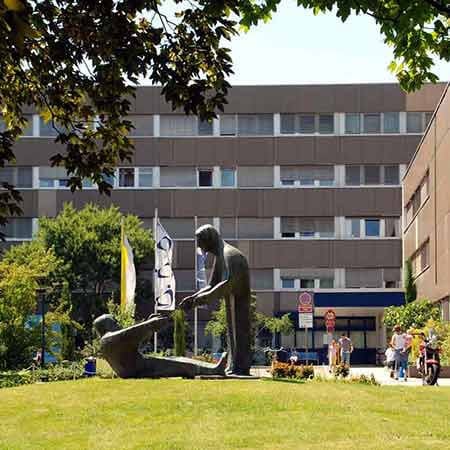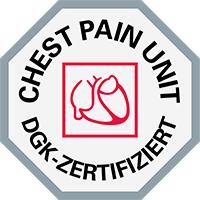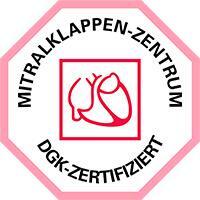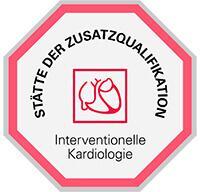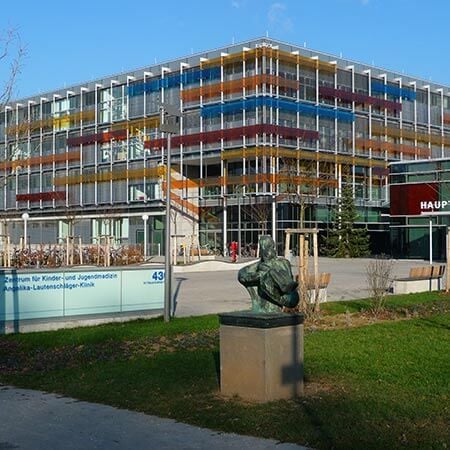Myocarditis is an inflammation of the heart muscle. The term combines numerous pathologies, which have different origins. Myocarditis is most often caused by viruses or autoimmune pathologies. The treatment is carried out according to the principles of heart failure therapy. European hospitals use not only standard drug therapy, but also modern non-drug methods and surgical interventions.
Content
- Causes
- Diagnosis
- Treatment principles
- Conservative therapy in the acute phase of myocarditis
- Elimination of arrhythmias
- Pacing and cardioversion
- Other treatment options
- Surgery
- Why is it worth undergoing myocarditis treatment in Europe
- Treatment in Europe at an affordable price
Causes
The most common cause of myocarditis is viral infections. The main causes of viral myocarditis in Europe are parvovirus B19 and human herpesvirus 6. Epstein-Barr virus, herpes simplex virus 1 and cytomegalovirus (herpesvirus type 5) are less common.
Rare causes of pathology are as follows:
- Bacterial, fungal, parasitic infections.
- Radiation therapy.
- Toxic medications for chemotherapy to treat cancer.
- Industrial poisons.
- Endocrine diseases (the most common of them are thyrotoxicosis or pheochromocytoma).
- Systemic connective tissue diseases.
- Rheumatic fever.
- Hypereosinophilic syndrome.
- Cardiac sarcoidosis.
Diagnosis
Diagnosis begins after the patient's visit to the hospital with the following complaints: shortness of breath, chest pain, fast heart rate, fever.
Instrumental diagnosis:
- Cardiac MRI is the most accurate examination, which allows doctors to detect the areas of edema and inflammation in the heart muscle.
- Ultrasound examination of the heart (echocardiography) is used to assess the heart functions, and allows medical specialists to exclude other diseases.
- ECG is the basic method for diagnosing heart disease, which is used to detect heart arrhythmias.
Laboratory diagnosis:
- Identification of inflammatory markers in the blood.
- Troponin tests for detecting signs of damage to the heart muscle.
- Detection of antimyocardial antibodies.
- Blood tests for viral diseases that can cause myocarditis.
The most reliable method of diagnosis for the disease is myocardial biopsy, but this examination is invasive. To obtain several samples of myocardial tissue, the doctor must enter the heart through a femoral vein or artery. A biopsy is rarely performed, only if clinically indicated. This diagnostic test can be used in case of long-term heart failure, a combination of myocarditis with other severe cardiac pathologies, as well as for a suspected heart tumor or anthracycline-induced cardiomyopathy.
Treatment principles
The patients diagnosed with myocarditis develop acute or chronic heart failure. The treatment is aimed at eliminating this condition.
The treatment for myocarditis has the following goals:
- Emergency care for life-threatening conditions, such as arrhythmias, acute circulatory failure.
- Elimination of chronic manifestations of circulatory failure caused by dysfunction of the inflamed heart muscle.
- Specific etiopathogenetic effects, depending on the cause of myocarditis: for example, suppression of viruses or relief of autoimmune inflammation.
Conservative therapy in the acute phase of myocarditis
The patients with unstable hemodynamics require hospitalization. The patient's condition can worsen at any time, so the hospital should have a modern cardiopulmonary resuscitation unit. With the development of cardiogenic shock or respiratory failure, the patient requires intensive care.
The treatment for severe acute myocarditis:
- Oxygen therapy – with blood oxygen saturation making up less than 90%, respiratory rate is more than 25 per minute.
- Tracheal intubation with transfer to artificial lung ventilation – if acidosis develops (blood "acidification") and too much carbon dioxide accumulates in the blood.
- Treatment with diuretics – if swelling appears on the legs or signs of pulmonary edema occur.
- Ultrafiltration of blood – a hardware method for removing fluid from blood vessels, which is used in case of ineffectiveness of diuretics.
- Vasodilators – these medicines are used to reduce pressure in the small circle (prescribed for pulmonary edema and stagnation in the pulmonary circulation).
- Inotropic agents – these mediations stimulate the heart and increase blood pressure, they are required for low cardiac output, oxygen starvation of organs and tissues (they are used in short courses only in critical cases).
Glucocorticoids are indicated in case of virus-negative myocarditis. However, these anti-inflammatory drugs are not prescribed for viral myocarditis, as they are not only likely to be ineffective, but can also worsen the heart function. This group of medicines is used only for giant cell, eosinophilic, granulomatous or autoimmune myocarditis.
Nonsteroidal anti-inflammatory drugs can rarely be used. Their effectiveness for myocarditis has not been proven. These medicines are usually used in the case of the spread of inflammation to the pericardium in order to relieve pain.
The patients with myocarditis need to limit their physical activity, and also doctors often resort to bed rest. This results in the increased risk of blood clot formation. To reduce the risk of thromboembolic complications, doctors often use anticoagulants during the acute period of myocarditis. They are prescribed for 1-2 weeks to patients with bed rest for 3 days or more, having a left ventricular ejection fraction of less than 35%. If during the period of myocarditis blood clots appear in the deep veins of the lower limbs or the left ventricle (they are detected in 20% of patients), after discharge from the hospital, the patient continues anticoagulant therapy with medication for up to 3 months.
Elimination of arrhythmias
Myocarditis causes the impairment of automatism and conduction of the heart. After the cure of the disease, the heart arrhythmia may regress, but in the acute phase, the rhythm disturbance often becomes the cause of the patient's death.
Here are some of the most common heart arrhythmias in patients with myocarditis:
- Sinus bradycardia is a rare pulse due to the decreased function of the sinus node (the main pacer of the heart, which generates electrical impulses).
- Increased area of hyperkinesis (reduced mobility) of the left ventricle.
- Heart block.
After suffering myocarditis, the heart rhythm is not always restored. As a result of severe inflammation, heart arrhythmias can sometimes cause irreversible damage to areas of the cardiac conduction system.
Antiarrhythmic drug therapy is most often provided to patients with unstable ventricular tachycardia, which is accompanied by symptoms and occurs during the acute period of myocarditis. Beta-blockers usually used for tachycardia are not applied for myocarditis, since they may pose an increased risk of an unfavorable outcome of the pathology. Doctors also avoid prescribing sodium channel blockers. Amiodarone can sometimes be used.
The prophylactic administration of antiarrhythmic drugs to the patient is not indicated, since it does not reduce the risk of sudden cardiac death. The medicines are used only when life-threatening arrhythmias occur. The medications are prescribed with great caution and continuous monitoring of the heart rhythm.
Pacing and cardioversion
When the risk of sudden cardiac death is high, doctors use wearable defibrillators. They track the heart rhythm. In the case of development of life-threatening heart arrhythmia, an electric shock is delivered to restore normal sinus rhythm.
In most cases, the need for such a device disappears after a few weeks. Nonetheless, if severe arrhythmias persist, then the patient undergoes a surgical intervention for the placement of a permanent implantable cardioverter defibrillator 1-3 months after the resolution of myocarditis symptoms. This device is placed under the thoracic skin and electrodes are inserted into the heart through the blood vessels. The patients who do not require continuous pacing need only one electrode, which is placed in the right ventricle.
As a result of myocarditis, the patient may still have heart blocks. If they lead to a significant decrease in heart rate, the pacemaker implantation is indicated. It can be combined with the implantable cardioverter defibrillator. This device is called an artificial pacer. It stimulates the atria and ventricles with electrical impulses, causing the heart to beat faster.
In severe heart failure and left bundle branch block, triple-chamber pacemakers are often implanted. Their peculiarity is that the leads are inserted not only in the right chambers of the heart, but also in the left ventricle. Three pacemaker leads provide synchronous contraction of all parts of the myocardium, thereby improving the pumping function of the heart. Therefore, this treatment option is called cardiac resynchronization therapy.
Other treatment options
Physical activity is strictly limited not only for the period of treatment, but also for 3 months after its completion. Professional athletes must not return to training for 6 months.
Most cases of myocarditis are caused by viral infections, and therefore doctors include antiviral medicines in the treatment regimen for some patients. In the enteroviral origin of the heart muscle inflammation, interferons are used. It is possible to use high doses of immunoglobulins as well.
With an autoimmune origin of myocarditis, immunoadsorption is used. This is a method of extracorporeal blood purification. The blood goes through a machine, which removes antibodies that damage the heart muscle. The technique is used only in large medical centers, which have the ability to detect autoantibodies and changes in their level over time.
In case of giant cell, eosinophilic, autoimmune myocarditis and cardiac sarcoidosis, immunosuppressive (suppressing immune responses) treatment is used.
Surgery
If myocarditis results in the development of irreversible severe heart failure, then the patient is indicated for surgery. There are two possible surgical options:
- Implantation of a mechanical circulatory support device (artificial heart or artificial ventricle).
- Heart transplantation.
Heart transplantation from a donor is a more effective treatment option. However, donor organs are always in short supply, so not all patients are candidates for this surgical intervention. Even if the patient is suitable for transplantation, it takes a long time to wait for this operation.
An artificial ventricle or artificial heart is implanted for several months. The device is implanted during the waiting period for donor heart transplantation. For patients who are not considered candidates for transplantation, the placement of mechanical circulatory support devices becomes the main treatment. Although it is less effective, the patient's life expectancy can be increased by several years.
Why is it worth undergoing myocarditis treatment in Europe
If the level of medicine in your country is low, it is better to go abroad for the treatment of myocarditis. Developed countries use the very latest medications. Doctors successfully cope with even the most severe cases of myocarditis.
There are several reasons for you to undergo medical treatment abroad:
- Modern, well-equipped departments of cardiopulmonary resuscitation and highly qualified doctors will save life in the acute phase of myocarditis with hemodynamic disorders.
- The use of the advanced treatment regimens according to international protocols.
- Doctors do not use outdated schemes, as they do not work or even increase the mortality of patients with myocarditis.
- Whenever required, non-drug procedures are used to support the heart function during the period of disease: ultrafiltration, cardio-synchronized muscle counterpulsation.
- In the case of severe heart failure, the very latest methods of circulatory support are used: catheter pumps, intra-aortic balloon counterpulsation.
- To prevent sudden cardiac death and restore heart rhythm after myocarditis, doctors provide interventional treatment.
- Cardiac surgeons perform the most complex heart interventions for severe irreversible heart failure: implantation of mechanical circulatory support devices and heart transplantation.
Most cases of myocarditis are successfully cured. Patients recover and do not suffer from arrhythmias or heart failure in the future.
Treatment in Europe at an affordable price
To undergo treatment in one of the European hospitals, you can use the services of the Booking Health company. On our website, you can see the cost of treatment in Europe, compare prices and book a medical care program at a favorable price. The treatment in Europe will be easier and faster for you, and the cost of treatment will be significantly reduced.
You are welcome to leave your request on the Booking Health website. Our consultant will contact you within 24 hours. The medical tourism operator from Booking Health will organize your trip for treatment in Europe. We will provide the following benefits for you:
- We will choose a hospital for treatment in Europe, whose doctors specialize in the treatment of myocarditis and achieve the best results.
- We will help you overcome the language barrier, and establish communication with your attending physician.
- We will reduce the waiting time for the medical care program. You will undergo treatment on the most suitable dates.
- We will reduce the price. The cost of treatment in a European hospital will be lower due to the lack of overpricing and additional coefficients for foreign patients.
- We will take care of all organizational issues, such as preparation of documents, hotel booking, transfer from the airport to the hospital. An interpreter will also accompany you abroad.
- We will prepare a program and translate medical documents. You do not have to repeat the previously performed diagnostic procedures.
- We will keep in touch with the hospital after treatment in Europe.
- We will organize additional diagnostic examinations and treatment in a European hospital, if required.
- We will buy medicines abroad and forward them to your native country.
The world's leading doctors will take care of your health. The Booking Health specialists will help reduce the cost of treatment, organize your trip, and you will only have to focus on restoring your health.
Authors: Dr. Nadezhda Ivanisova, Dr. Sergey Pashchenko
